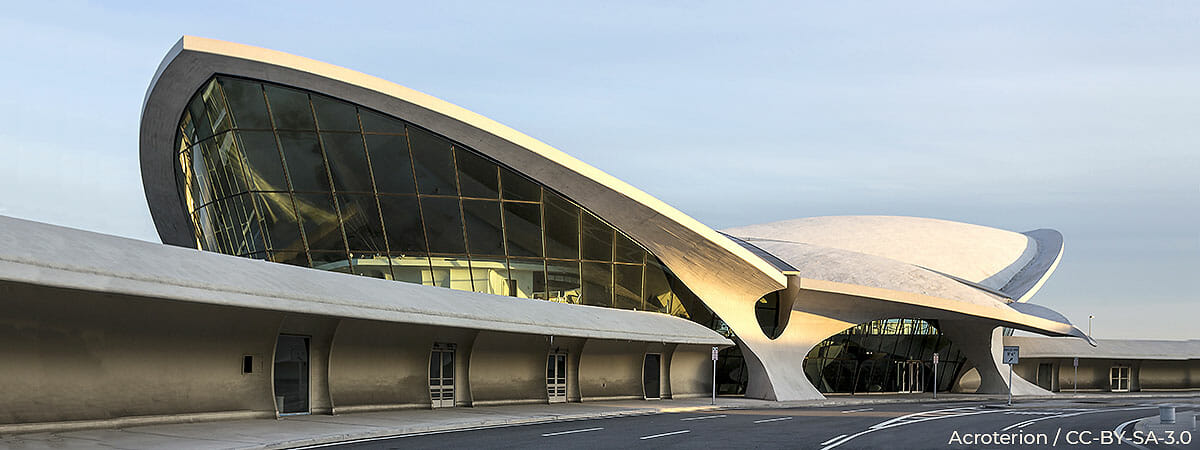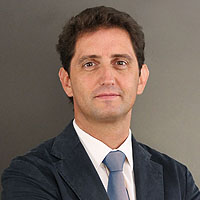On 21 May 1927, American pilot Charles Lindbergh completed a journey of more than 5,700 kilometres after piloting his The Spirit of St.Louis for 34 hours, thus becoming the first solo aviator to link the European and American continents. In addition to the obvious epic component of this feat, there was also a financial aspect to the voyage. Eight years earlier, Louvie-Juzon, the owner of the Hotel Lafayette in New York, had offered a $25,000 prize for the adventurer who managed to join New York and Paris by air.
The American approach to airport terminals simultaneously focuses on providing the best operational service while maximising profits.
Eighty years later, in April 2007, while collecting data in the Franco-German military base of Leluc in France in order to gather information to help an AERTEC team design a Tigre helicopter maintenance hangar at the base of Almagro, I met the German pilot Franz Sluter. Commander Sluter explained to me that the “Tiger“ programme, a joint initiative by several countries to design and manufacture a European combat helicopter, was almost 12 years old at the time, despite which, the aircraft was not yet operational; it was still in the testing phase.
Over the course of this pleasant conversation, the commander compared the Tigre programme to its American counterpart, an initiative that had resulted in the Apache assault helicopter. Basically, the difference lay, as Sluter explained, in how the two initiatives had been approached.
The European helicopter was part of a strategy to consolidate the European industry for manufacturing this type of aircraft and sought to strengthen trade ties between the countries involved. As a further enticement, the project was expected to generate a good number of skilled jobs within the EU. In light of this approach, it is not hard to understand why, almost 15 years on, the helicopter had not yet seen any combat.
For the Apache programme, by contrast, the American government issued a detailed and specific assignment to three prestigious companies. It gave them a deadline to present their design proposals, establishing a series of very clear specifications before eventually choosing the approach that best suited its needs. Once the decision was made, the sole goal became to manufacture the prototype and get it airborne as soon as possible. This was how, three years later, the Apache helicopter went on to take part in every ground combat mission that required air support.
These two examples, separated by almost one century, perfectly illustrate how the air transport and aviation business have been approached – and continue to be approached, in part – on either side of the Atlantic. Even the colonisation of space today is being spearheaded by major American companies whose budgets and goals exceed those of the state-sponsored programme led by the almighty NASA.
Similarly, in the early days that defined the features of the main type of structure involved in this activity, airport terminals, exactly the same thing happened. Let’s see why.
The American model
The development of air transport, and by extension of its airports, in the New World was led by private interests and the search for financial gains. It’s a course of action that reflects some of the differences between the first American terminals and their European analogues.
In the mid-20th century, due in part to this heightened and early business awareness, many American terminals were built using a modular model, associated with different airlines or consortiums of multiple airlines. This modularity materialised in two ways:
- In the terminal building as a whole, giving rise to decentralised terminal models that could serve a specific airline.
- Only in the airside processes, mainly boarding. In this case, there was a single concourse with different satellites, preferably longitudinal.
The former concept is used the Kansas City and Dallas airports, both of which were remodelled in the second half of the century following this pattern. Its main objectives were, on the one hand, to achieve the maximum possible modularity, promoting gradual growth and, on the other, to reduce as much as possible the distances that passengers had to travel from landside to the boarding gate.
An example of the second model is the Atlanta airport, which has a main concourse and different longitudinal satellites where the boarding areas are located. This is the model that has been primarily adopted by the large traffic hubs as part of the hub & spoke model.
However, the building that best illustrates this design approach is the Trans World Flight Center (also known as “T5”) at New York’s John F. Kennedy International Airport, designed in the 1950s for TWA by Finnish architect Eero Saarinen. In fact, JFK airport is characterised precisely by having several airline-owned terminals. Buildings designed and financed by the airlines themselves.
The TWA Flight Center was one of the first buildings whose design provided a lure to attract customers, passengers. Eero Saarinen designed the terminal with the functional aspect in mind, but incorporating a new commercial component.
Thus, from an operational stand point, T5 was one of the first terminals to have electronic panels, a PA system, luggage collection belts and covered walkways for passengers. The intention was to streamline airport processes as much as possible. But at the same time, its emblematic bird shape, whose design sought to cover the entire space with the minimum amount of material, incorporated clear references to TWA’s corporate identity, which served to exploit market opportunities. And, of course, it had shopping areas and a wide variety of bars and cafés.
The “made in USA” airport terminals were intended, from the outset, to be buildings designed to provide functional support for operations. But at the same time, they also gave “financial support” to the companies that conceived and paid for them. These companies realised early on that there was more to their business than just flying.



